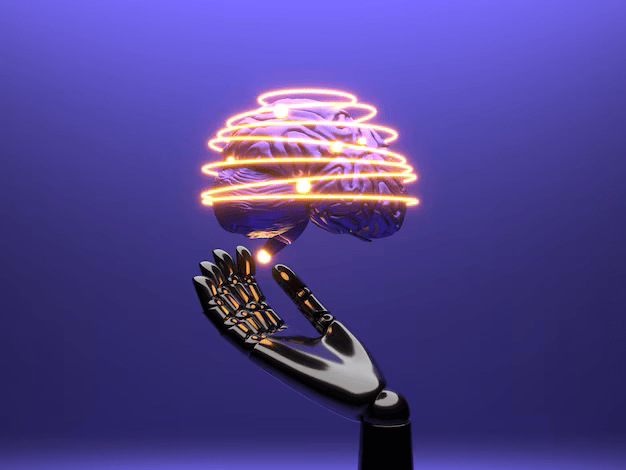It has long been believed that creativity is a quality that distinguishes humans from machines and algorithms. It serves as the catalyst for creativity, the capacity for original thought, and the means of artistic expression. The connection between AI and creativity has grown more complicated recently, though. Imitating human creativity is all that machines are capable of, but can they be truly creative? This article explores the potential, constraints, and ethical questions raised by the growing relationship between AI and creativity.
Generative art is one of the most visible fields where AI exhibits its creative potential. Deep learning models and other algorithms can produce works of art, music, and even poetry that are frequently indistinguishable from those produced by humans. AI has shown its ability to create visually attractive and philosophically engaging works with programs like Google’s Deep Dream and AI-driven artists like Robbie Bar rat.
AI systems are also able to think creatively while fixing issues. Large-scale datasets can be analyzed using machine learning algorithms, which can also find patterns and produce creative answers to challenging issues. For instance, supply chains have been optimized, more effective algorithms have been created, and new medicine molecules have been discovered using AI.
Artificial intelligence (AI) can be a potent tool for enhancing human creativity. For musicians, authors, and artists, it can spark creativity, develop drafts, and offer ideas. While AI-powered design software can help graphic artists in their job, tools like Chat GPT can assist writers in brainstorming ideas or overcoming creative blockages.
Cross-Domain Inspiration: AI can find inspiration from a wide range of sources, bridging the gaps between several disciplines or art forms. It can examine and combine inspirations from music, visual art, literature, and other genres to produce something wholly original. Cross-pollination can produce unexpected and creative outcomes.
Lack of True Understanding: While AI may mimic creative outputs, it lacks true conceptual understanding of the concepts it manipulates. Because it lacks the innate awareness and consciousness that people do, it frequently produces shallow creative works. For instance, AI-generated art might not have the breadth of human emotion and experience.
Data Dependence: AI is very dependent on the data it is taught on. It cannot produce particular patterns or styles if it has never come across them. As a result, it may be difficult for AI to come up with completely original ideas because its creativity may be constrained to what it has learned from previously existing human works.
No Emotional Connection: Human innovation is frequently fueled by emotions, which AI lacks. Human-made literature, music, and other forms of expression are frequently used to share intense emotional experiences with other people. Some audiences may find AI creations to be less compelling because they lack this emotional connection.
Ethics: The application of AI to creativity presents ethical issues. Who is the copyright owner of creative works produced by AI? Should content produced by AI be handled differently from content produced by humans in terms of intellectual property rights? The Question Remains Largely Unanswered.
Ethics-Related Matters
The rise of AI in the creative industries raises significant ethical conundrums:
Identification of authorship and copyright ownership in AI-generated content is a complicated matter. Who owns the copyright to artistic creations—the programmer, the user, or the AI itself? These inquiries query current copyright regulations.
AI models are frequently trained on biased datasets, which might cause societal biases to be perpetuated in the work that is produced. This raises questions regarding the representation and diversity of AI-generated art and material.
Given how well AI can imitate human ingenuity, there is a chance that audiences or customers could be misled by AI-generated material. Should rules be in place to guarantee transparency when AI is applied to the creative industries
Future of AI and Innovation
Future developments in AI and creativity are exciting. AI is probably going to keep pushing the envelope in terms of problem-solving and creative expression. It is crucial to understand that AI’s contribution to creativity is a tool for collaboration and inspiration rather than a replacement for human ingenuity.
Collaboration: A lot of musicians, writers, and artists are already working together with AI as a source of creativity and a tool to improve their creative processes. New forms of artistic expression might emerge as a result of the combination of human ingenuity and AI technology.
Innovation: AI can assist people in overcoming creative constraints and investigating new avenues. For instance, AI can create original chord progressions or melodies in music that human songwriters might not have considered, leading to originality.
Education: AI has the potential to be a useful educational tool, enabling people to explore and acquire new creative disciplines. It can produce examples to help with learning and offer real-time feedback.
AI can be a tool for artists to use in their artistic development. Serendipity and randomness, which frequently play a key role in creative processes, can come from it.
Read More: Astro Anuradha’s analysis of Vivek Ramaswamy’s Chart
In conclusion, creativity and AI are complementary rather than antagonistic. AI can push the limits of creative expression, help with problem-solving, and emulate human inventiveness. Though it presents important ethical issues, it falls short in terms of human understanding and emotional connection. Collaboration, innovation, and new forms of artistic expression will shape the future of artificial intelligence in creativity. As AI develops further, technology will be interesting to observe how technology influences and shapes the creative landscape while collaborating with rather than replacing human innovation.

